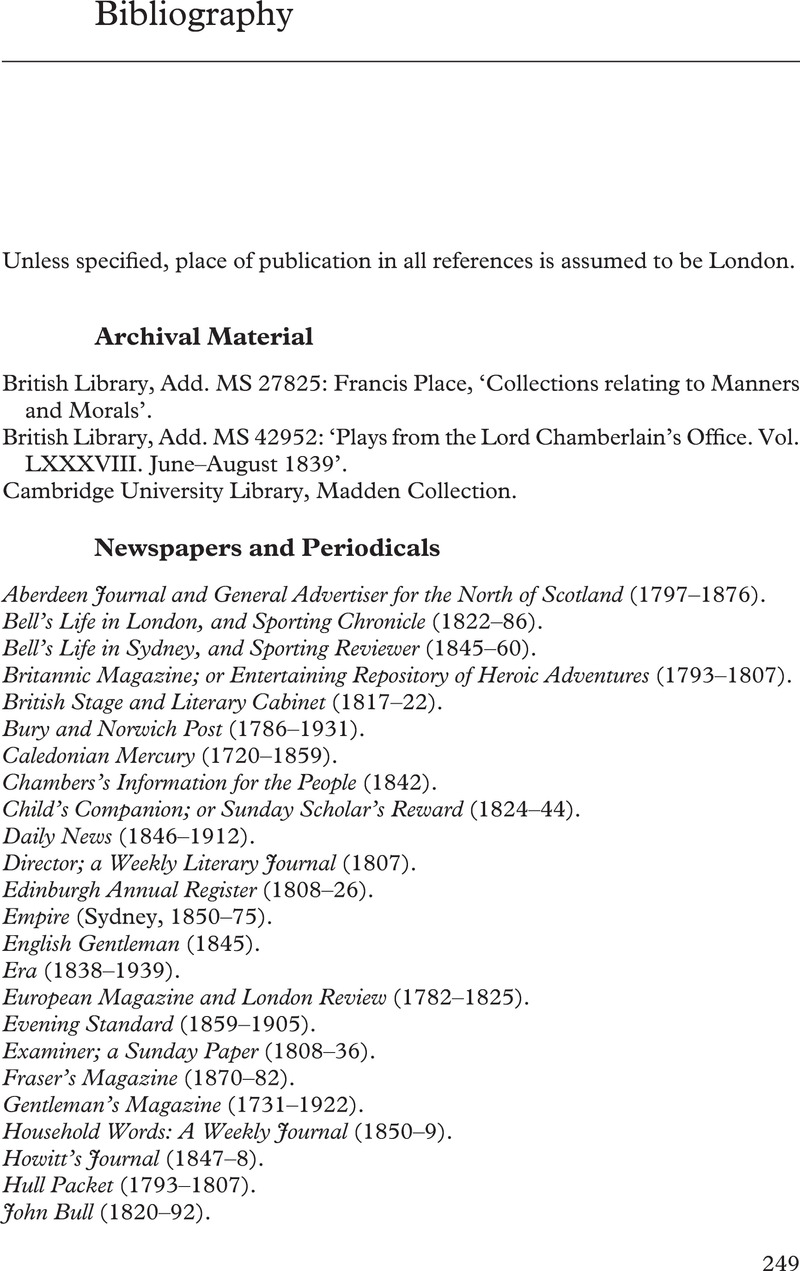Book contents
- The Ballad-Singer in Georgian and Victorian London
- The Ballad-Singer in Georgian and Victorian London
- Copyright page
- Contents
- Figures
- Tables
- Musical Examples
- Recordings
- Acknowledgements
- Note on the Text
- Abbreviations
- Introduction
- 1 Representations
- Interlude I
- 2 Progress
- Interlude II
- 3 Performance
- Interlude III
- 4 Repertoire
- Interlude IV
- Conclusion
- Bibliography
- Index
- References
Bibliography
Published online by Cambridge University Press: 05 February 2021
- The Ballad-Singer in Georgian and Victorian London
- The Ballad-Singer in Georgian and Victorian London
- Copyright page
- Contents
- Figures
- Tables
- Musical Examples
- Recordings
- Acknowledgements
- Note on the Text
- Abbreviations
- Introduction
- 1 Representations
- Interlude I
- 2 Progress
- Interlude II
- 3 Performance
- Interlude III
- 4 Repertoire
- Interlude IV
- Conclusion
- Bibliography
- Index
- References
Summary

- Type
- Chapter
- Information
- The Ballad-Singer in Georgian and Victorian London , pp. 249 - 274Publisher: Cambridge University PressPrint publication year: 2021



